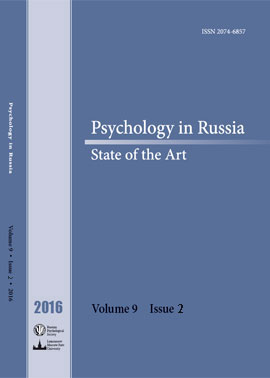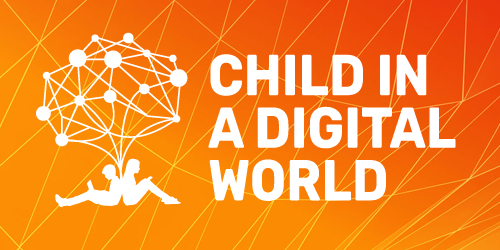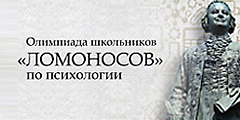Psychology in Russia: State of the Art, Moscow: Russian Psychological Society, Lomonosov Moscow State University, 2016, 2, 176 p.

2016
Volume 9 (02)
Volume 9 (02)
Medical psychology
-
Structural-phenomenological features of the internal picture of doctors’ illnesses
-
Strategies and resources for coping with fear of disease progression in women with reproductive system cancer
-
The contamination of young people’s notions about narcotics and psychoactive substances as a threat to psychological security
Personality psychology
-
An existential criterion of normal and abnormal personality in the works of Carl Jung and Carl Rogers
-
Adaptation of instruments developed to study the effectiveness of psychotherapeutic processes
-
Self-transcendence facilitates meaning-making and flow: Evidence from a pilot experimental study
Speech and semantic
-
Pilot study of the influence of a communicator’s speech characteristics on a recipient’s willingness to maintain interaction in cross-cultural online communication
-
Eye movement parameters while reading show cognitive processes of structural analysis of written speech
Social psychology
-
Competitiveness of personality as a psychological phenomenon: The content of the construct and its typology









